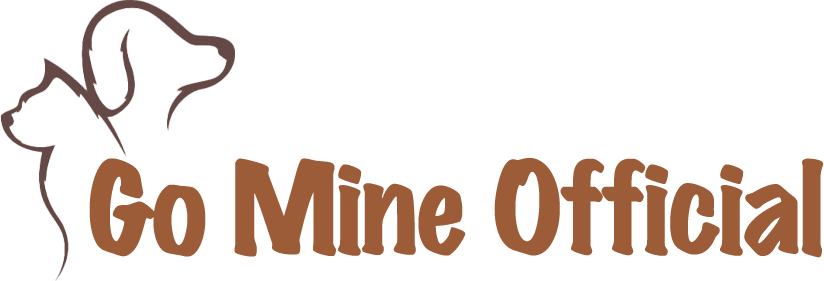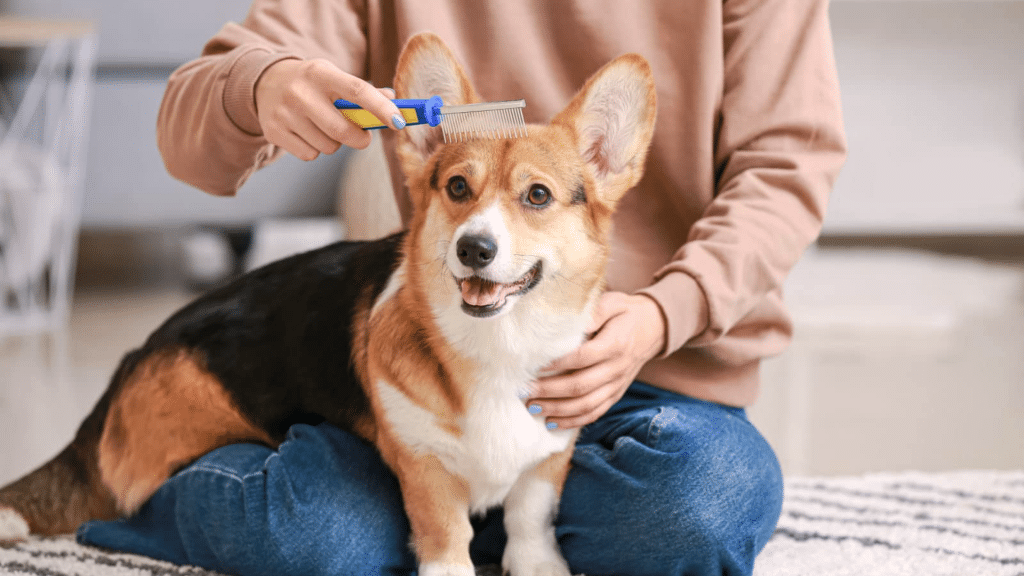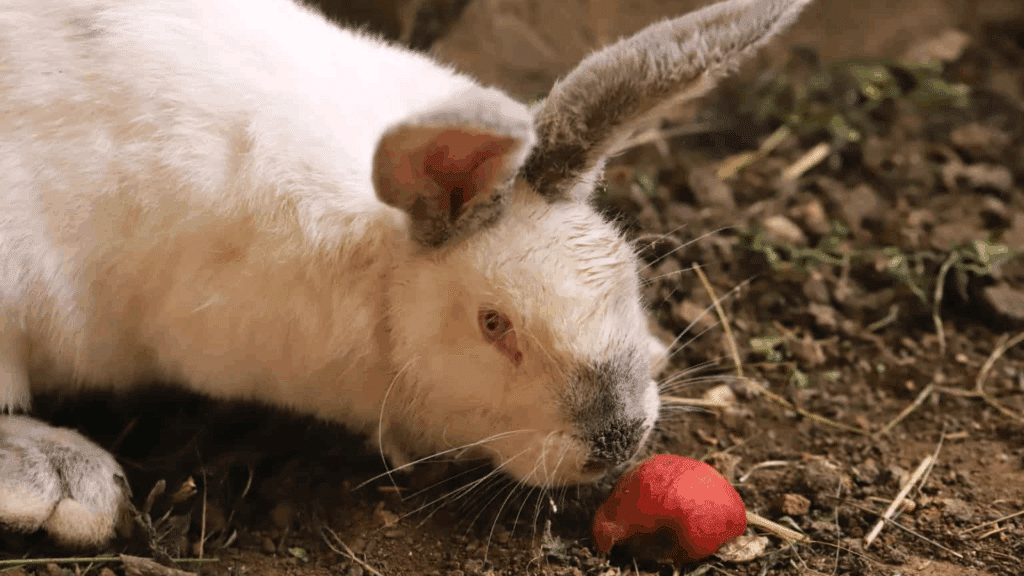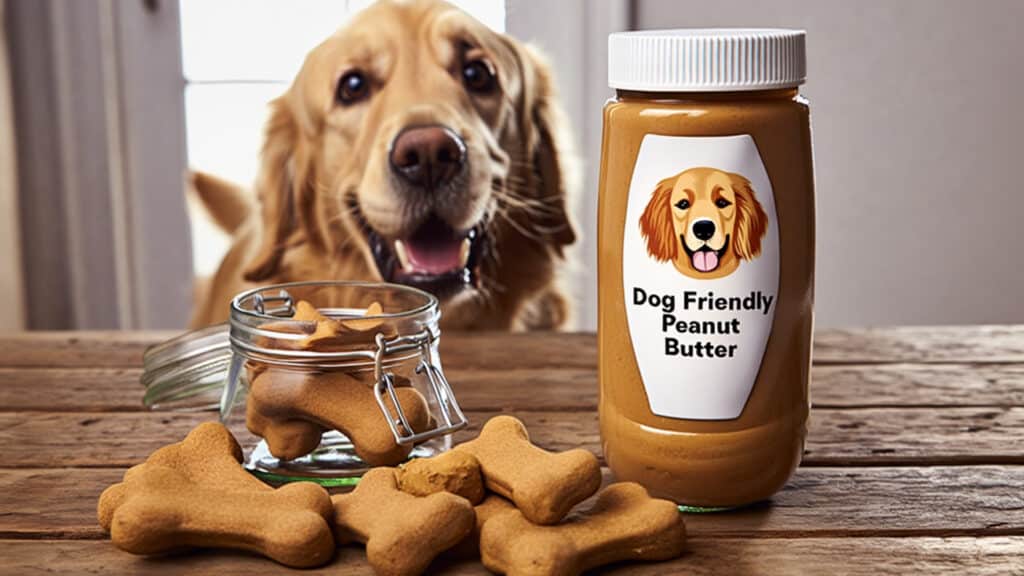Keeping a dog’s coat healthy isn’t just about looks; it’s about comfort and care. Regular brushing helps remove loose hair, dirt, and tangles while keeping your dog’s skin healthy.
But not every brush works for every coat type. The wrong one can make grooming harder for both of you.
I learned this when my dog Max squirmed every time I used the wrong brush. Once I found the right brush, grooming turned into something he actually enjoyed.
In this guide, you’ll learn about:
- The main types of dog brushes
- How to choose the right brush for your dog’s coat
- Simple tips to make brushing easier
By the end, you’ll know exactly which brush to pick to keep your dog clean, healthy, and happy.
Why the Right Dog Brush Matters?
When I first started brushing my dog, I didn’t realize how much the right brush could change things.
Using the right one helps remove loose hair, dirt, and tangles without pulling or hurting your dog’s skin. It also spreads natural oils, keeping their coat shiny and healthy.
Regular brushing can even turn into bonding time, where your dog feels calm and cared for.
But when you use the wrong brush, it can do more harm than good; it might cause skin irritation, discomfort, or even small scratches.
That’s why it’s important to pick a brush that suits your dog’s coat type. It makes grooming easier for you and keeps your dog comfortable and happy every time you brush.
Dog Brush Types and Their Best Uses at a Glance
| Brush Type | Best For (Coat Type) | Main Uses | Key Benefits |
|---|---|---|---|
| Slicker Brush | Long, curly, or thick coats (e.g., Poodles, Golden Retrievers) | Removes tangles, mats, and loose fur | Keeps coat smooth, prevents matting, ideal after baths |
| Pin Brush | Long, silky, or wavy coats | Detangles, smooths, removes light dirt | Gentle on coat, adds shine, great for daily brushing |
| Bristle Brush | Short, smooth coats (e.g., Beagles, Boxers) | Removes dirt, dust, and loose hair | Spreads natural oils, adds shine, gentle for sensitive skin |
| Rubber Brush | Short-haired or sensitive-skin dogs (e.g., Pit Bulls, Dalmatians) | Massages skin, removes loose hair during or after baths | Improves circulation, easy to clean, dog-friendly texture |
| Undercoat Rake | Thick, double coats (e.g., Huskies, German Shepherds) | Removes dead undercoat hair, reduces mats | Controls shedding, improves air flow to skin |
| Deshedding Tool | Double-coated or heavy shedders (e.g., Labradors, Corgis) | Pulls loose hair from undercoat without damaging topcoat | Reduces shedding, keeps coat healthy, minimizes cleanup |
| Grooming Glove | Short to medium coats; dogs that dislike brushes | Removes loose hair and dirt with petting motion | Comfortable for dogs, promotes bonding, easy to clean |
Types of Dog Brushes and Their Uses
Regular brushing keeps your dog clean, comfortable, and free from tangles, but not every brush works the same. Each brush works best for a specific coat type and texture.
1. Slicker Brush
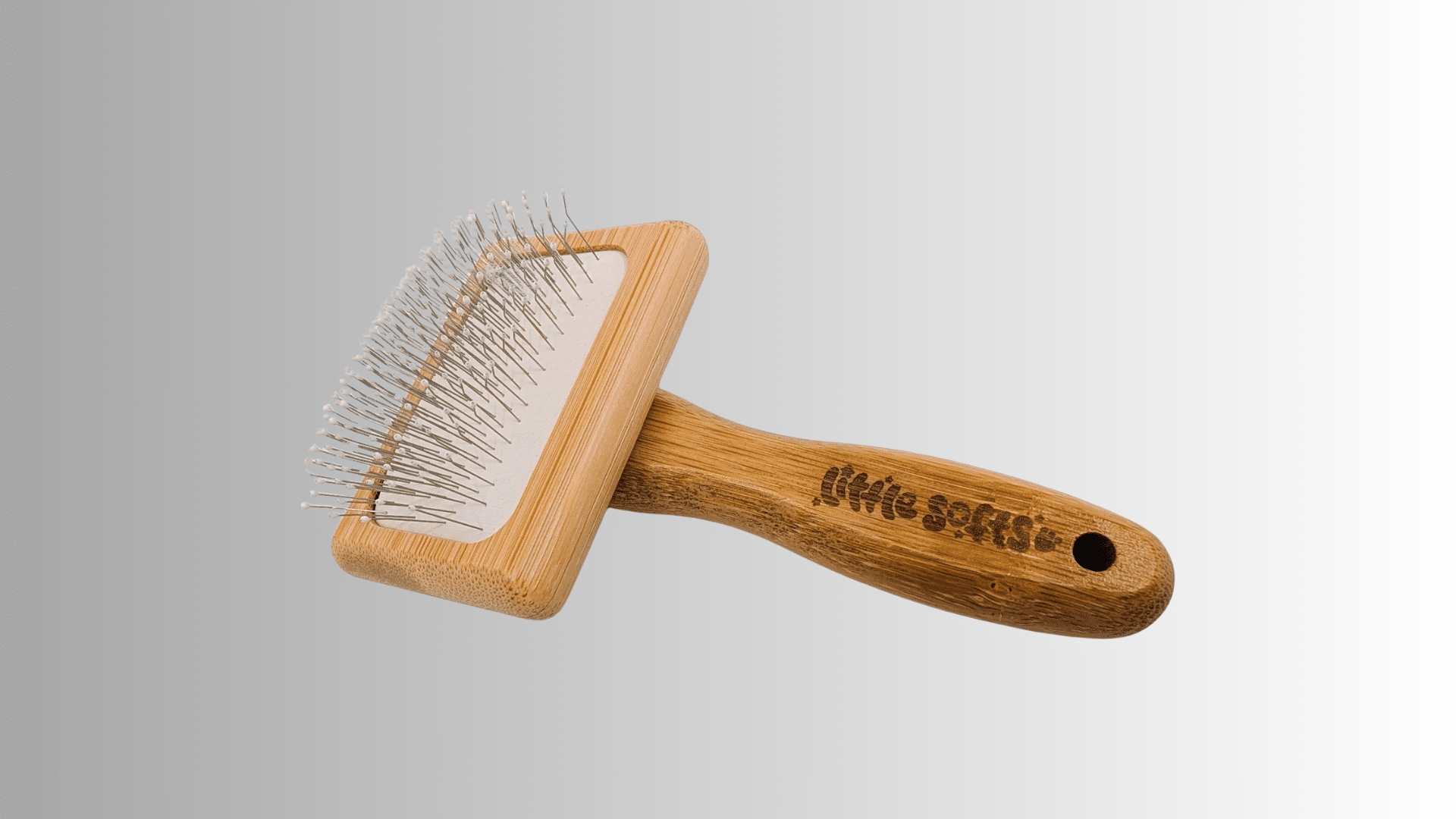
A slicker brush has fine, short wires that work wonders for removing tangles, mats, and loose fur. I use it on my dog whenever his coat feels clumpy or looks uneven.
You can use it for breeds with long, curly, or thick coats, like Poodles or Golden Retrievers.
Move it slowly and gently through the fur to avoid scratching the skin. It’s perfect after baths or outdoor play sessions when the coat tends to knot.
Use it regularly if your dog’s coat mats easily, and clean the brush often to keep it effective.
2. Pin Brush

A pin brush looks much like a human hairbrush and works best for long, silky, or wavy coats. I use it between grooming sessions to keep my dog’s fur looking neat and free from tangles.
You can use it daily to remove light dirt and loose hairs while giving the coat a smooth finish.
The rounded pins glide through the fur without pulling or snagging.
It’s also great for fluffing up your dog’s coat after blow-drying. If your dog dislikes harsh brushes, this one keeps grooming comfortable and easy.
3. Bristle Brush

A bristle brush is perfect for short, smooth-haired dogs like Beagles or Boxers. I like using it because it spreads the dog’s natural oils, keeping their coat shiny and healthy.
You can use it daily or every few days to remove dust, debris, and light shedding.
The bristles feel gentle on the skin, making it ideal for dogs that don’t need heavy brushing. Short, quick strokes work best to lift loose hair and dirt. It’s a simple brush, but it makes a big difference in coat health.
4. Rubber Brush

If your dog has short hair or sensitive skin, a rubber brush is one of the easiest tools to use. I often grab it during bath time because it helps lift loose hair while massaging the skin.
You can use it wet to help shampoo lather evenly or dry to remove shedding fur.
The rubber tips are soft, so your dog will enjoy the gentle feel. It’s great for breeds like Pit Bulls or Dalmatians. Plus, it’s easy to clean, just rinse and dry.
It’s one of those tools that keeps both you and your dog happy.
5. Undercoat Rake
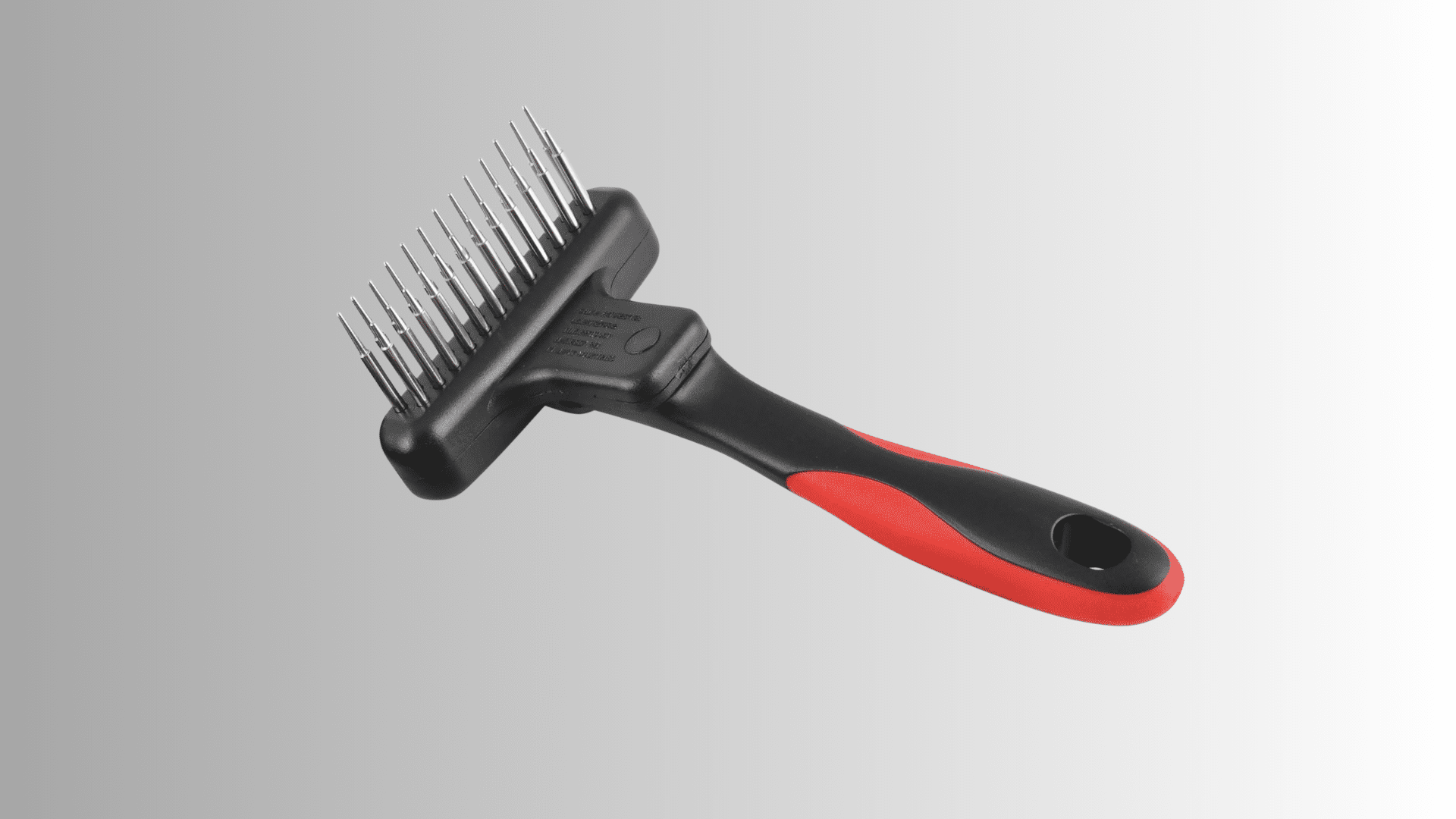
An undercoat rake is a must-have for thick, double-coated dogs such as Huskies or German Shepherds.
I use it during heavy shedding seasons when fur seems to cover everything. The long teeth reach deep into the undercoat to pull out dead hair before it mats.
You can use it once or twice a week, depending on how thick your dog’s coat is.
Always brush gently to avoid irritating the skin. It keeps the coat light, reduces shedding, and helps air reach your dog’s skin. A quick brush with this tool can save hours of cleanup later.
6. Deshedding Tool

A deshedding tool works to remove loose hair from the undercoat without cutting or harming the top layer. I find it helpful for controlling heavy shedding, especially with Labradors and Corgis.
You can use it once or twice a week, applying light pressure as you brush along the coat’s natural direction.
It helps prevent loose fur from piling up in your home and reduces the need for constant vacuuming. Regular use also keeps your dog’s skin cleaner and more comfortable.
It’s one of those tools that saves time and effort while keeping your pet neat.
7. Grooming Glove

A grooming glove is great if your dog hates traditional brushes. I use it for quick touch-ups and to make grooming feel more like petting. Just slip it on and run your hand over your dog’s coat.
It removes loose hair, improves circulation, and gives a light massage that most dogs enjoy.
You can use it every day for short or medium coats, especially during shedding seasons. It’s easy to clean, just peel the collected fur off the glove.
This tool makes brushing less of a chore and more of a bonding time for you and your dog.
How to Choose the Right Brush for Your Dog’s Coat?
Choosing the right brush starts with knowing your dog’s coat type. For short-haired dogs, a bristle or rubber brush works best to remove loose hair and keep the coat shiny.
Long-haired breeds need a pin or slicker brush to prevent tangles and mats. If your dog has a curly coat, a slicker brush helps manage curls without pulling.
Double-coated dogs benefit from an undercoat rake or deshedding tool that reaches deep layers to control shedding.
Always focus on your dog’s comfort. If they dislike brushing, try softer or gentler tools. Avoid choosing brushes based on looks or brand names; instead, think about what your dog’s coat needs.
The right brush not only keeps their fur clean and healthy but also makes grooming a calm, bonding experience for both of you.
How Often Should You Brush Your Dog?
How often you brush your dog depends on their coat type and how much they shed.
Short-haired dogs usually need brushing once a week to remove dirt and loose hair. Medium or long-haired breeds should be brushed every two to three days to prevent tangles and mats.
Dogs with curly coats often need daily brushing to keep their fur soft and free of knots.
Double-coated dogs, like Huskies or Retrievers, shed a lot and need brushing a few times a week, especially during shedding seasons.
Regular brushing doesn’t just keep your dog clean; it helps spread natural oils, improves skin health, and keeps shedding under control.
Making brushing part of your routine will keep your dog’s coat shiny, smooth, and comfortable all year round.
Simple Tips for an Easy Brushing Routine
Brushing doesn’t have to be stressful for you or your dog. A calm, steady routine helps your dog feel safe and enjoy grooming time. Keep it simple and consistent with these easy tips:
- Pick a quiet spot where your dog feels relaxed and won’t be distracted.
- Start with short sessions, just a few minutes each time, to help your dog adjust.
- Brush gently, especially around sensitive spots like the belly and tail.
- Check for tangles before brushing and work them out slowly to avoid pulling.
- Use treats or praise to make brushing a positive experience.
- Follow the coat’s direction to prevent discomfort and breakage.
- Clean your brush regularly to keep it effective and hygienic.
- End with calm petting so your dog associates brushing with comfort and care
Conclusion
Grooming your dog isn’t just about keeping them looking good; it’s about their comfort, health, and happiness.
Regular brushing helps remove dirt, loose hair, and tangles while improving skin circulation and bonding time. The right brush makes grooming easier and more enjoyable for both of you.
Whether your dog has short, long, or thick fur, consistency matters more than perfection.
A few minutes spent brushing every week can prevent mats, reduce shedding, and keep your dog’s coat shiny and healthy.
Remember to choose tools that suit your dog’s coat and personality, and keep the experience calm and positive.
With a bit of patience and the right routine, grooming becomes less of a chore and more of a way to care for and connect with your dog.
